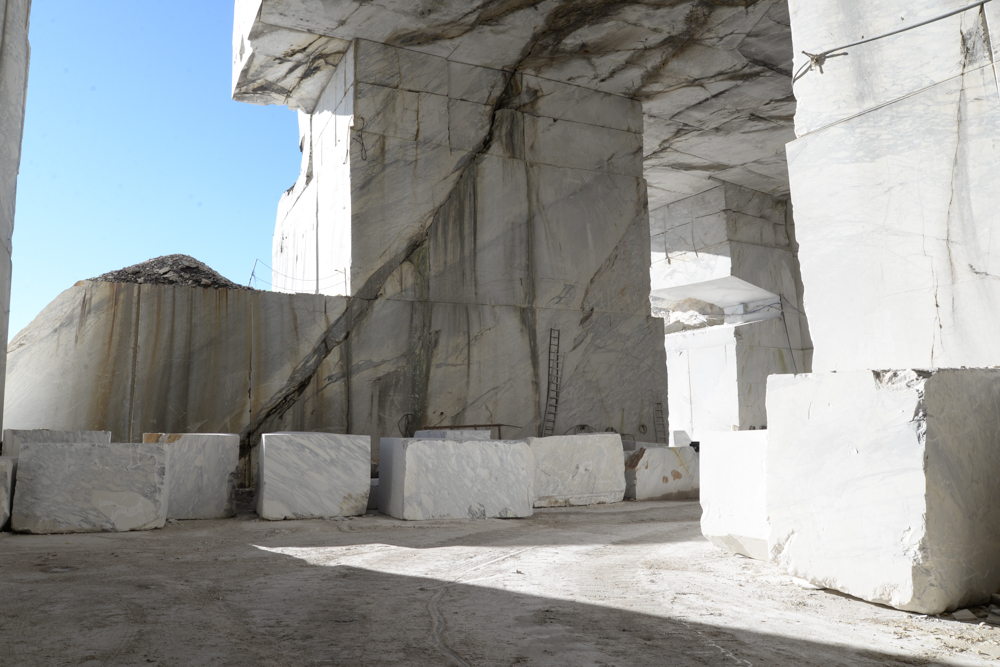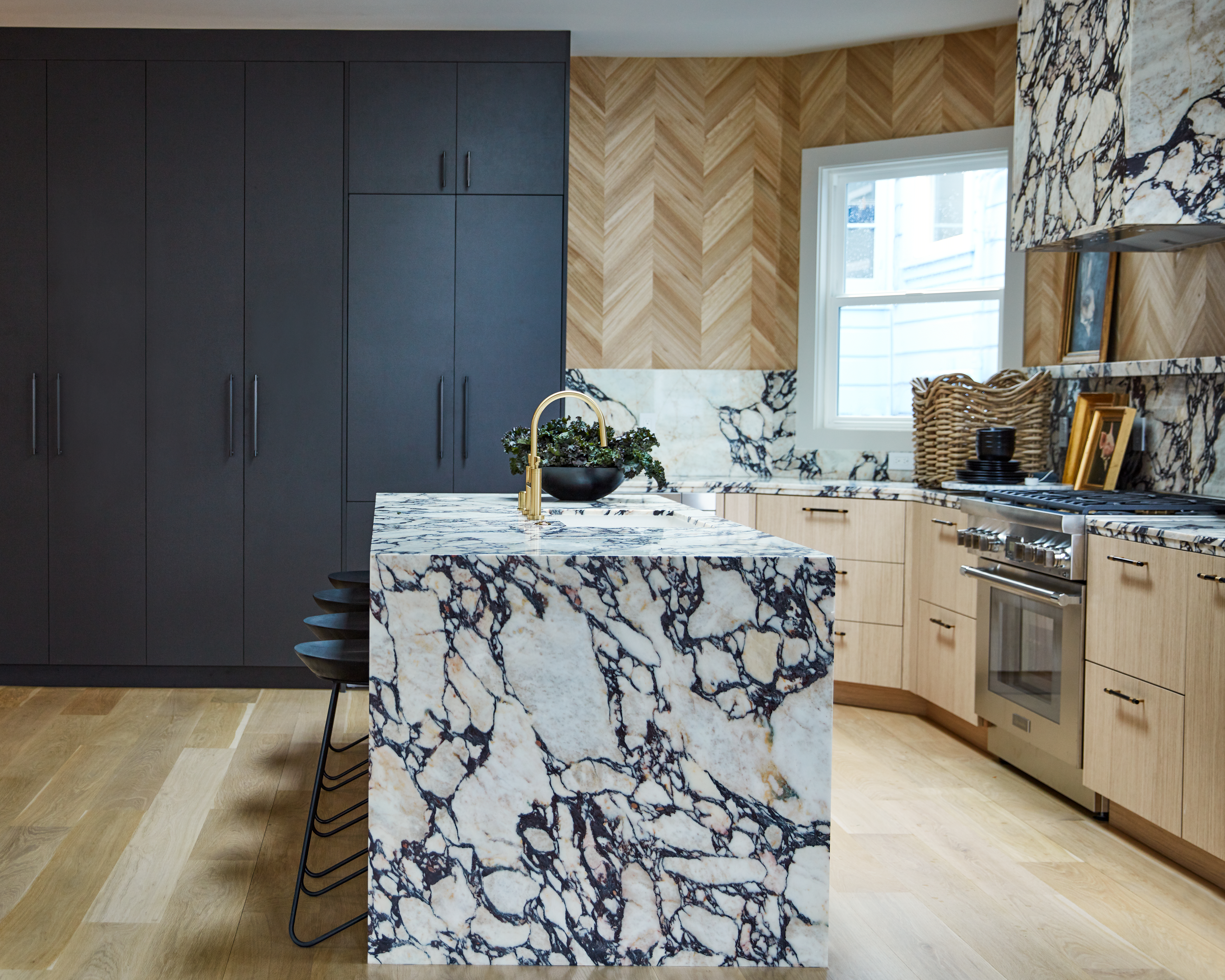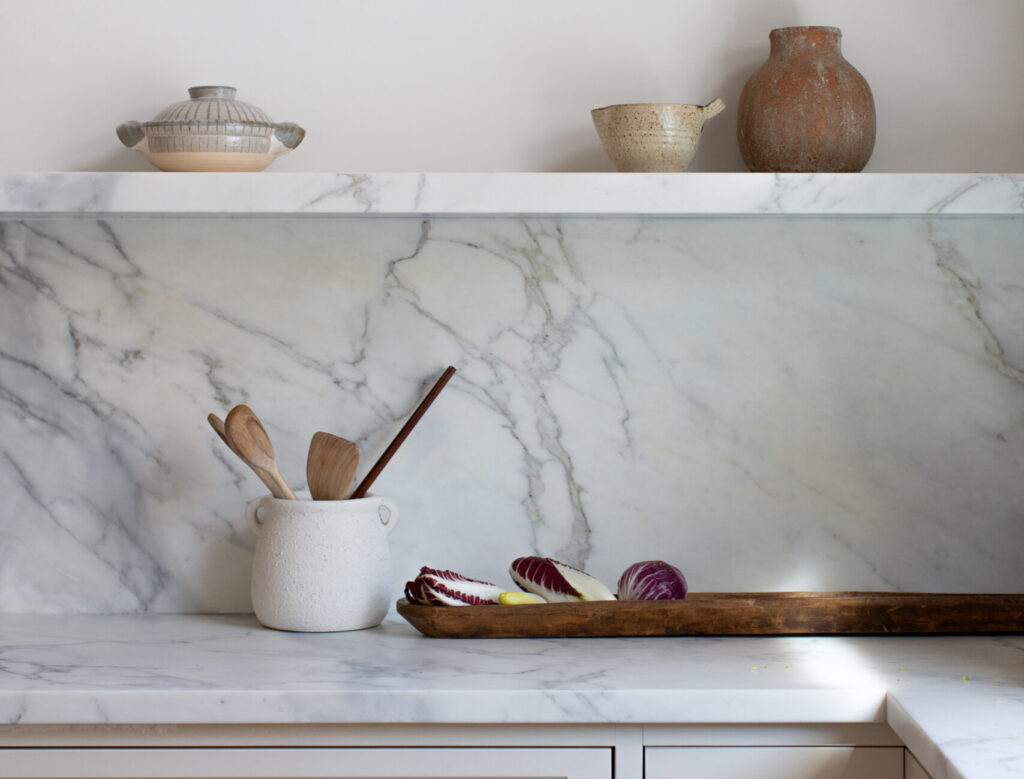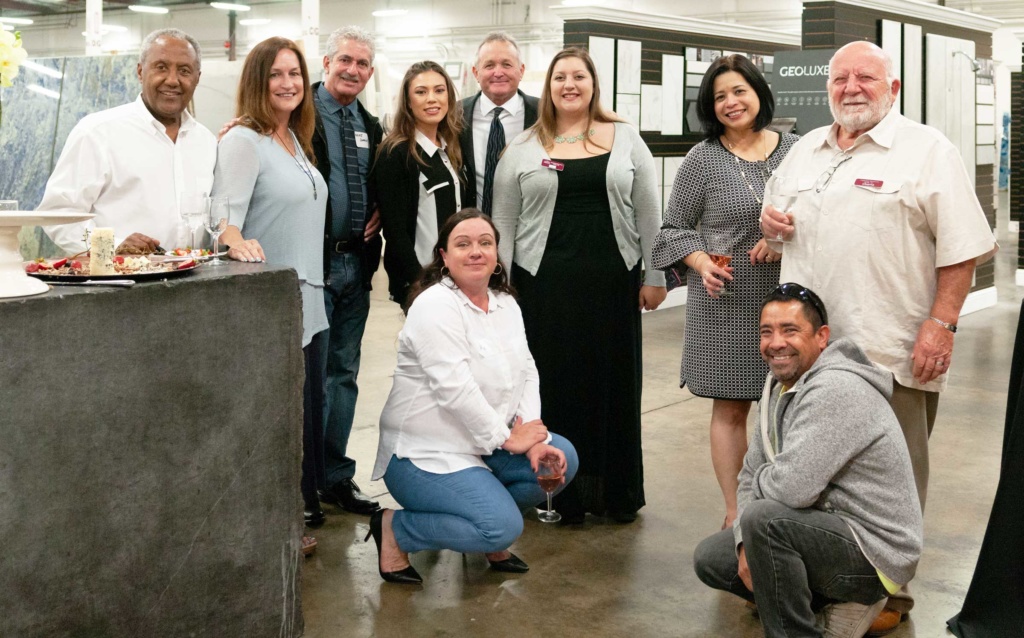Just as the kitchen is the heart of the home, countertops are the centerpiece of the kitchen. The decision as to which material to use to create these centrally located, highly-used areas is an important one whether you’re a homeowner, designer, or architect. When choosing the best and most appropriate material for the surface, it’s important to understand the functionality, durability, maintainability, longevity, costs, and appearance of each one.
No two pieces of natural stone are the same, nor are they perfect. In fact, it is the variation in each slab that gives the material its innate beauty. Because it can be overwhelming when shopping for and comparing one material to another, we have compiled this guide to help you through the decision-making process.
The question of whether to choose marble, other natural stone, or an engineered material for your kitchen or bathroom, comes down to this: How does marble stack up?

From the Lincoln Memorial to the Taj Mahal, marble has been the material of choice for the world’s most famous works of art and iconic structures for centuries. Elegant, dramatic, and lustrous, marble is a natural and unique material, a precious gift from the earth with colors and patterns that are completely singular, unpredictable, and non-repetitive.
Durable, beautiful, and incomparable are just some of the adjectives that describe this stately stone, so we believe it’s important to understand a little bit about its origins to fully appreciate its value.
The Origin of Marble
For marble to be created, many processes must align, and separate forces must occur. It is only at the end of a long process that marble can be harvested from the earth and enjoyed for its glorious texture, innate strength, and unparalleled beauty.
Classified as metamorphic stone, marble originates as limestone, a rock composed of calcite along with the remnants of shells, coral, fossils, and other sea debris. As these pieces settle and erode, they form layers of sediment that deepen after many years.
Limestone at this stage is a sedimentary rock that is frequently mined for construction uses of its own. If left untouched and subjected to the earth’s immense heat and pressure, over millions of years, the minerals within limestone will recrystallize and begin to form the structure of marble.

Composition
Marble is composed of approximately 99.5% pure calcium carbonate and a mix of other minerals. The combination and composition of these minerals during metamorphism give each marble its distinct veining and variations in color. It is during this formation process that the marble’s inherent physical properties such as hardness and durability are also determined.
Qualities
Marble is a naturally porous stone, which is one of the most common concerns when considering marble over other materials for kitchen countertops. When properly maintained, however, marble not only gets more beautiful with age, but is strong, durable, and resilient enough to last for generations.
This timeless maturation is one reason why there has been a resurgence of traditional Italian marbles, like Calacatta Viola and Calacatta Monet. Their brecciated movement—indicative of vivid pebble-like, circular veining—gives a classic touch to modern spaces.
Known for having a crisp backdrop, marbles are the most desired and in demand the whiter they are. Movement and veining are also hallmarks of marble that increase a slab’s value. As one of the most reputable of marbles, Calacatta is known for gray veining with gold tinges and a bright white background. More distinct veining indicative of a traditional Calacatta will have a higher price point compared to varieties with more clouded movement. Alternatively, Carrara marbles lean more gray but are still sought after as they’re considered to be an affordable variety within the white marble family.

How Marble Compares
Granite
Whereas the movement within marble can resemble swirling veins, Granite contains color variations that appear as flecking throughout the stone. For decades it has acted as a durable and reliable natural stone for kitchen countertops.
Granite has a hardness score of 6 to 7 on the Mohs scale, making it highly resistant to scratches and damage from heat. An ideal material for kitchen counters both inside and outside the home, granite countertops will not easily scuff or discolor from everyday household activities.
Quartz
Not to be confused with Quartzite, Quartz is a man-made stone that has gained popularity in recent years as a versatile and low-maintenance alternative to natural stone countertops.
Because quartz is manufactured in a factory, the slabs are more consistent and durable than marble or other natural stone slabs. Quartz is non-porous, making it stain resistant without the need to seal the surface. However, due to its resin content, quartz can be susceptible to heat damage at high temperatures and discoloration from the sun. If quartz is used on a table or kitchen countertop, protection from heated elements such as hot plates, pots, or bakeware is required. It is not recommended as a backsplash surface behind the stovetop or range.
Quartzite
Another all-natural stone, quartzite is a metamorphic rock formed from sandstone that has been subjected to high temperatures and pressure beneath the earth’s surface. Reaching a 7 to 8 on the Mohs Hardness Scale, quartzite is today’s go-to natural stone choice for kitchen countertops and other high-traffic spaces due to its durability over marble in addition to its soft, veined look.
Quartzite countertops are also resistant to scratches, acids, etching, heat, and sunlight, making them an excellent option for both indoor and outdoor surfaces. Though quartzites rarely rival the bright background of white marble, light quartzites featuring neutral tones of beige, tan, and gray are often used as marble alternatives. Although quartzite requires upkeep through sealing to ensure its longevity, well-maintained quartzite countertops will resist wear and tear and last for years, if not decades.
Porcelain
Made of the clay mineral kaolinite, porcelain is known for its delicate aesthetic and resistance to elements like acid, heat, water, and fire. Compared to other engineered materials like quartz, porcelain has a higher heat resistance and touts a particularly realistic replication of marble veining.
Unlike marble, however, the veining and patterns of porcelain are only surface-level, which is why chips, cuts, and abrasions must be professionally repaired to restore the surface’s original appearance. Porcelain is more difficult to cut and shape on a fabrication level, making edge details less customizable than marble, which holds its natural beauty.
Types of Finishes
To prolong the beauty of marble, it’s important to parse through finish options that best serve the needs of a space or installation. Polished marbles are ideal for enhancing a slab’s natural colors, vibrancy, and veining. Honed finishes give marble surfaces an organic feel with a matte appearance that adds depth, dimension, and texture. They’re also the most forgiving finishes as honed marbles will not show etch marks as noticeably when in contact with acidic ingredients.

Care
Etching happens when acid stains or eats the material on marble surfaces. Although prone to etching, sealing marble can help prevent surface stains. Diligently sealing your marble countertops every year (or 5-10 years, depending on the type of sealer) will also help to maintain their luxurious qualities and condition. In addition to sealing marble slabs, you’ll also want to protect your surface by adhering to the following tips:
- Blot up spills immediately.
- Do not use acidic cleaners with lemon or vinegar.
- Do not use acidic bathroom cleaners or oven cleaners.
- Do not use abrasive cleaners or sponges.
- Clean with a soft cloth or sponge, warm water, and non-abrasive or mild soap daily or as needed.
- Use a pH-balanced cleaner specifically for marble and stone or a mild, phosphate-free, biodegradable dishwashing detergent such as Dawn mixed with water for regular cleaning.
- Thoroughly rinse and dry marble surfaces with clean, clear water after washing dishes.
- Keep acids like vinegar, tomato sauce, lemon juice, and harsh cleaners from coming into contact with the surface.
- Place trivets, coasters, and other heat absorbents under hot or scratch-prone items

Sealing your selection can help protect and prolong its lifespan. There are various sealers available on the market.
- Topical Sealers are coatings designed to protect the surface of the stone against water, oil, and other contaminants. They are formulated from natural wax, acrylic, and other plastic compounds.
- Impregnators are water or solvent-based solutions that penetrate below the surface and become repellents. They are either hydrophobic (water-repelling) or oleophobic (oil-repelling). Impregnators keep contaminants out but do not stop the interior moisture from escaping. Considered “breathable, Impregnators have vapor transmission.
Making the decision about which natural material to use for your countertops is an important one, as you will likely be living with this choice for years—if not decades—to come. The largest in-stock provider of natural stone slabs in the Bay Area, carrying product lines that are unsurpassed in the industry, IRG is passionate about educating our customers. Contact or visit one of our showrooms to speak with a stone expert about your choices.

Carrying the largest selection of superior-grade, elegant, beautiful, and long-lasting natural stone available in the world today, including marble, granite, quartzite, and onyx, as well as an array of engineered surfaces, including quartz and porcelain slab, we welcome the opportunity to assist you throughout your decision-making process and design journey.
Dedicated to helping you create the kitchen of your dreams; we invite you to visit our showroom and allow our experts and creative consultants to help you choose the perfect surface for your home. As unique as the individual, we treat every project with the utmost care, paying special attention to each client’s specific needs, budget, lifestyle, and style preferences. Call IRG at (415) 657-0280 or visit us at a showroom convenient to you in Brisbane, Dublin, or Sacramento.